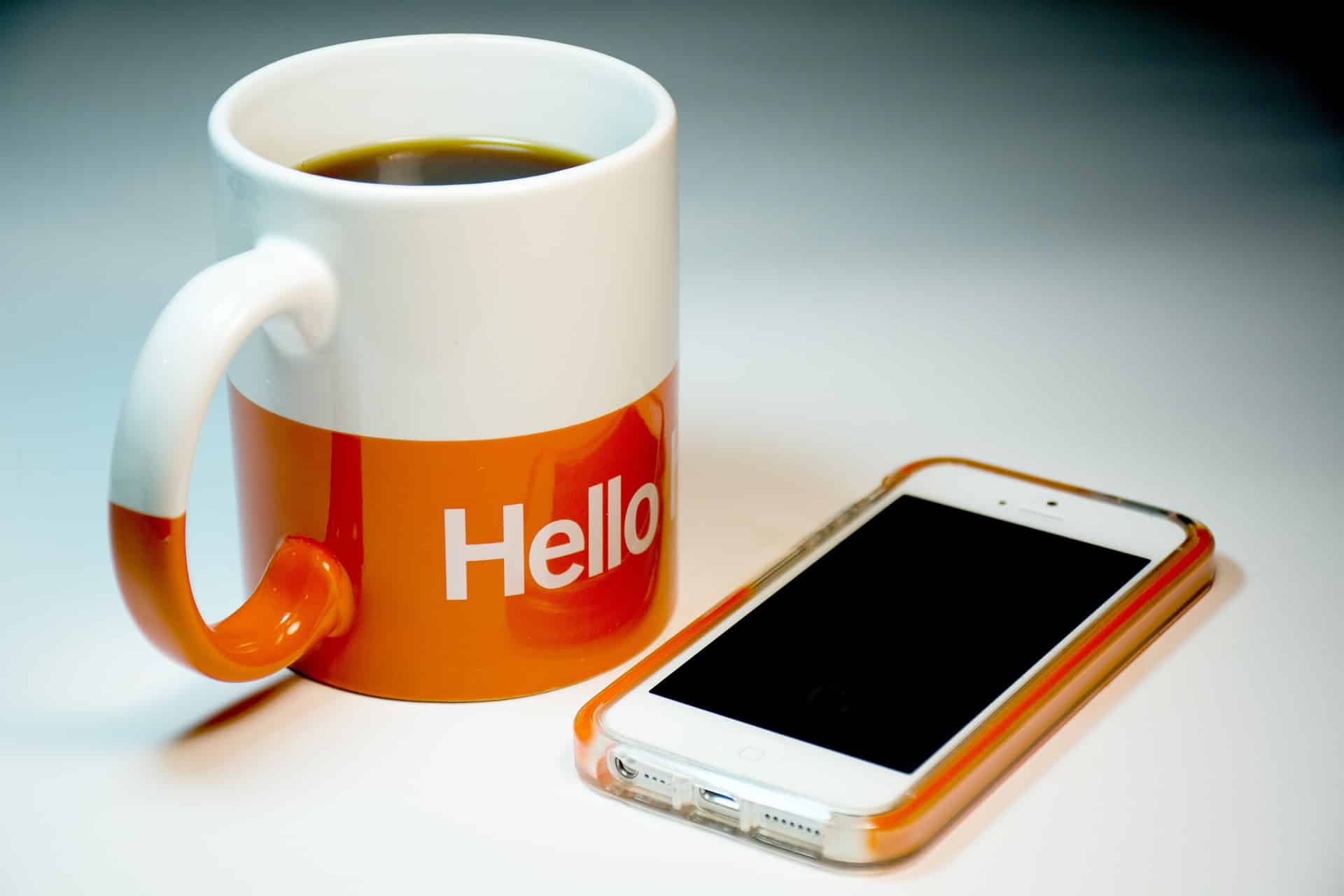No matter the industry, if you utilize email marketing and want to build better consumer relationships, a welcome email sequence is a must!
Think of it as a virtual guide for new subscribers—a way to learn about your business and what you have to offer them.
Welcome emails also usually have an average open rate of about 30% and five times more clicks than other email marketing campaigns!
Yet these are not the only benefits of greeting a new subscriber in this way. Let’s take a look at a few other benefits of implementing a welcome email sequence.
6 Advantages of a Welcome Email Sequence
Trust & Credibility:
A well-crafted welcome email can help build trust and credibility within your brand. Be transparent and tell them who you are, what you value, and why they should choose you over a competitor. Here are a few ways that a welcome email can help build trust and credibility:
- Introduce yourself and your brand: A welcome email is a great opportunity to introduce yourself and your brand to new subscribers. You can build trust with your new subscribers by providing a brief overview of who you are, what you do, and what you stand for.
- Provide valuable information: You can demonstrate your expertise and credibility by providing valuable information in your welcome email. This can include your subscribers’ tips, resources, or relevant industry news.
- Show your personality: A welcome email is a great opportunity to showcase your brand’s personality and values. You can help build trust and credibility with your subscribers by being authentic and relatable.
- Be transparent about your policies and practices, such as data privacy, unsubscribing process, and other important information. This will help build trust with your subscribers by showing that you respect their privacy and are open and honest.
- Share customer testimonials: Share customer testimonials or case studies in your welcome email to show your previous customers have had positive experiences with your brand. This can help build trust and credibility with new subscribers.
- Show your commitment: By sending a welcome email, you are showing your commitment to building a relationship with your subscribers. By providing valuable information and being transparent and authentic, you can help.
Create a Solid First Impression:
Creating a solid first impression is crucial to building a successful customer relationship. A well-crafted welcome email can help make a positive first impression by thanking the customer for subscribing and welcoming them into your community. Here are a few ways that a welcome email can help create a solid first impression:
- Show gratitude: By thanking the customer for subscribing, you show that you value their interest in your brand. This simple act of gratitude can help create a positive first impression and set the tone for a successful relationship.
- Welcome them to your community: By welcoming the customer to your community, you are making them feel like they are a part of something special. This can create a sense of belonging and encourage the customer to continue engaging with your brand.
- Provide external links: Provide external links to your website, blog, or other social media platforms in your welcome email. This can help create a solid first impression by showing the customer that you have a robust online presence and that they can easily find more information about your brand.
- Invite them to join your other social media platforms: Inviting the customer to join your other social media platforms in your welcome email can help create a solid first impression by showing that you have a strong online presence and that you value their engagement with your brand.
- Personalization and Use of customer’s name: Using the customer’s name in the email, personalizing the message, and making them feel special will help create a good first impression.
- Showcase your best content: Showcase your best content in the welcome email, whether it’s a video, blog post, or a case study; it will help to demonstrate your expertise and value proposition, which will help in creating a strong first impression.
Establish Expertise:
Establishing expertise in your field is crucial in building customer trust and credibility. One way to do this is by including case studies or testimonials in your welcome email sequence. Here are a few ways that case studies and testimonials can help establish expertise:
- Show results: Case studies and testimonials can provide concrete examples of the results your customers have achieved by working with you. This can help establish your expertise by showing that you have a track record of delivering value to your customers.
- Provide social proof: Case studies and testimonials can provide social proof that your customers have had positive experiences with your brand. This can help establish your expertise by showing that other people trust and value your products or services.
- Highlight specific skills or knowledge: Case studies and testimonials can provide specific examples of your skills or knowledge in your field. This can help establish your expertise by showing that you have a deep understanding of the industry and that you can deliver results.
- Show your unique approach: Showcasing your unique approach in solving a problem or addressing a specific need can help establish your expertise. This can help differentiate you from your competitors and show you have a unique perspective and approach to your field.
- Showcase the breadth of your expertise: Include case studies or testimonials from different industries or niches; if you have a diverse range of clients, it will demonstrate your flexibility and the breadth of your expertise.
Storytelling Opportunity:
Welcome emails are an excellent opportunity to tell your brand’s story and connect with your subscribers on a deeper level. By sharing your brand’s story, you can create a more personal and emotional connection with your subscribers and help them understand what sets you apart from others. Here are a few ways to use storytelling in your welcome email:
- Share your brand’s history: Share your brand’s history and how it came to be. This can create a deeper emotional connection with your subscribers by showing them your brand’s journey and what inspired its creation.
- Offer a behind-the-scenes look: Offer a behind-the-scenes look at your business or process. This can create a more personal connection with your subscribers by giving them an inside look at your brand’s operations.
- Highlight the values that set you apart: Highlight the values that set your brand apart from others. This can create a deeper emotional connection with your subscribers by showing them what your brand stands for and why it’s different from others in the industry.
- Show your impact on the community: Share how your brand has positively impacted the community. This can create a deeper emotional connection with your subscribers by showing them that your brand is not just about making a profit but also about making a difference.
- Share your brand’s vision and mission: Share your brand’s vision and mission. This will help the subscriber understand your brand’s purpose and the impact you want to make in the world.
Set Expectations:
Setting expectations is essential for building a successful relationship with your subscribers. A welcome email sequence allows you to set the tone and expectations for your subscribers by providing information about how and when they will hear from you. Here are a few ways that a welcome email sequence can help set expectations:
- Communicate your email schedule: Let your subscribers know how often they can expect to hear from you via email. This can help set expectations and ensure that your subscribers know when to expect your emails and how often they will receive them.
- Provide information about upcoming promotions or events: Share information about any upcoming promotions or events that your subscribers can expect to see from your brand. This can help set expectations and ensure that your subscribers know what to expect from your brand in the future.
- Explain the purpose of your emails: Explain the purpose of your emails and the value they will provide to your subscribers. This can help set expectations and ensure that your subscribers understand the value they will receive from your emails.
- Offer a transparent unsubscribing process: Make sure to provide a straightforward unsubscribing process in your welcome email and all your following emails; it will help set the expectations that you respect your subscriber’s preferences and will not force them to receive unwanted emails.
- Highlight the different ways you can help: Highlight how your brand can help fulfill the wants and needs of your subscribers. This can help set expectations and ensure that your subscribers understand the value that your brand can provide to them.
Deliver Sales and Incentives:
Including sales and incentives in a welcome email, the sequence can effectively drive conversions and encourage subscribers to make a purchase. By offering a special deal or incentive, you can make your subscribers more likely to take action and make a purchase. Here are a few ways that a welcome email sequence can deliver sales and incentives:
- Offer a limited-time discount: Like a percentage off their first purchase or free shipping. This can encourage them to take action and make a purchase quickly before the offer expires.
- Provide exclusive access to sales or promotions: Give your subscribers exclusive access to sales or promotions unavailable to the general public. This can make them feel special and encourage them to take advantage of the offer.
- Offer a free gift with purchase: Such as a complimentary product or service. This can add value to your subscribers and encourage them to purchase.
- Offer a loyalty program: Such as rewards for repeat purchases or referral discounts. This can encourage them to make multiple purchases and become long-term customers.
- Create a sense of urgency: Use language and design elements, such as “limited time offer” or “only available to the first 50 subscribers”. This can encourage your subscribers to act quickly and make a purchase before the offer expires.
A Few Extra Tips
When setting up your email sequence, make it clear and concise by using a step-by-step method. You want the consumer to know exactly how you would like them to respond.
- Always add a Call To Action (CTA) button if you want the email to be most effective. Don’t place the CTA at the end. Make it easily visible in the body of the email without the need to scroll for it.
- Include a link and ask them to complete a survey. This will help you to segment your customer base to send out more personalized campaigns in the future.
- Utilize high-quality images. These could be customers, products, an ad regarding warranties, return policies, or anything else to promote your offer.
- Decide how many emails will be in your sequence. You may send out only a single email or five. However, it is recommended to use a three-sequenced email to get your points across quickly and precisely.
A welcome email sequence can be structured in a variety of ways, but one possible approach is to use the following three emails:
- Email #1: A sincere welcome: The first email in the sequence should be a genuine welcome message that thanks the subscriber for signing up. This email should establish the nature of your brand and provide a brief overview of who you are, what you do, and what you stand for.
- Email #2: A more in-depth look: The second email in the sequence should provide a more in-depth look at your business, products, and services. This email can showcase your products or services in detail and provide additional information about your business. Additionally, you could use this email for a behind-the-scenes look at how you operate or give back to the community. This will help the subscriber understand the values of your brand and the impact you want to make.
- Email #3: Input testimonials and reviews: The third email should include testimonials and reviews from previous customers. This can establish trust and credibility with your subscribers by showing positive experiences with your brand. The incentive should be relevant and attractive to the subscriber and a “no-brainer” for them to say yes.
By structuring the welcome email sequence in this way, you can establish trust and credibility, provide valuable information about your business, and encourage conversions by offering an incentive or discount. This approach can help build a strong relationship with your subscribers and encourage them to become long-term customers.
Welcome emails are an excellent tool to give an in-depth overview of your business and establish a strong foundation of trust, loyalty, and respect with your customers. By providing valuable information, being transparent, and offering incentives, you can create a positive first impression, establish expertise, set expectations, and build trust and loyalty with your subscribers. This will help establish a foundation for a long-term, successful customer relationship.








0 Comments